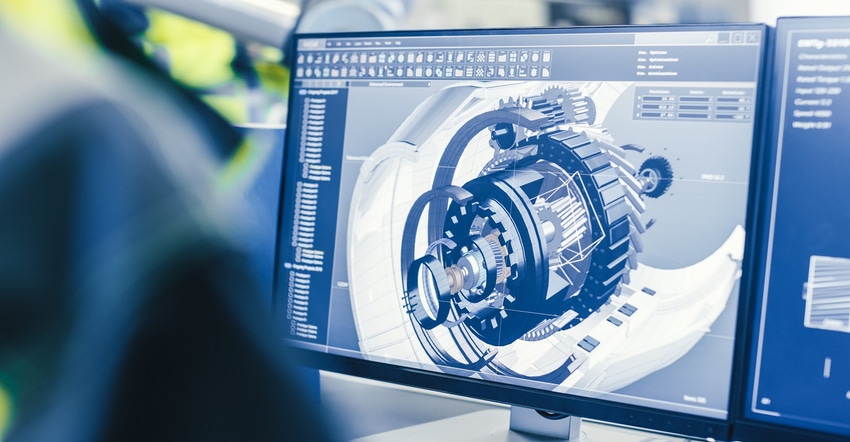Risk Reduction Considerations When Selecting a Visualization Platform
A visualization platform that enables easy collaboration across development teams helps to reduce technical risk When deploying new technology.
July 15, 2023

Paul Haikal, commercial portfolio director, Rockwell Automation
Deploying new technology in the manufacturing industry involves significant investment.
Every choice must be carefully considered to ensure it meets the needs of the organization, can be deployed securely and with minimal disruption and, critically, effectively manages and mitigates technological risk.
There are three key areas where visualization software supports risk mitigation:
Reducing Technical Risk
For manufacturers seeking to reduce technical or implementation risk, a visualization platform that allows users to generate proprietary code must be an important consideration, particularly one that can be deployed easily and effectively across various applications.
When designing applications, the ability for an integrator, for example, to develop and then use a library of proprietary code for specific applications that are tested, proven and trusted both optimizes and simplifies the development and deployment process. Because these modules have been tried and tested, they can be deployed in individual applications with the assurance and confidence that they are robust known quantities. Furthermore, if customer support is required at any point, the fact that developers are working with code that is used often, understood, well-documented and tested reduces support risk and promotes expedited resolution.
A visualization platform that enables easy collaboration across development teams helps to reduce technical risk. To err is human, and while a solo developer might be a great asset, a collaborative design environment where multiple developers can augment, develop and test each other's work, either in real-time or in sequence, means that multiple sets of eyes are on the project and potential problems can be flagged earlier.
Also, collaborative development with a common shared repository, like GitHub, and revision control are elements a visualization solution must have, along with supporting technical risk remediation. Traceability and visibility allow teams to see when people make changes, who made those changes, and why, and have documentation of the changes made. Without revision controls, two users may be editing the same part of an application at the same time, which can result in potential errors and lost time. With revision controls, users can visualize and resolve any conflicts, eliminating errors or potential lost work. Having these controls embedded in the editor streamlines the entire development process and decreases risk by removing revision control issues from the equation.
Reducing Schedule Risk
Because teams are working with proprietary, well-understood and well-tested pieces of code and aren’t starting from scratch each time, development and deployment time, along with any associated costs, are reduced.
Designing using standardized interfaces also enables information to be fed both from real-time control systems and from one software component to another, and from there up to remote database servers and up to the cloud. Having these field-proven modules of intellectual property enables much quicker deployment, reducing scheduling risk, than having to “reinvent the wheel” every time.
Reducing Commercial Risk
A significant investment is required from an integrator or an OEM to review a customer Request for Quote and to research and produce a proposal, so a reasonable certainty of landing the business is desired. It’s here that having a standardized set of developed, tested, and trusted content that can be used flexibly in a variety of ways again delivers a distinct advantage to mitigate commercial risk.
Working with components that are comprehensively understood in terms of their function and deliverables, and that end-customers may already be familiar with, increases confidence in the robustness of the solution and its ability to deliver the desired performance and results. Applications developed using existing code and content that are fully proven both lower development costs and shorten product delivery times. Expectations can be managed better as teams are working with known entities, with minor modifications being made as necessary to fit individual scenarios.
One final consideration relating to the choice of visualization platform and commercial risk is the flexibility to run software agnostically on any computing device. Generally, software platforms are deployable to one or more industrial systems running Windows or LINUX. However, a new class of sealed Human Machine Interface (HMI) appliances is emerging, which serve as edge computing-type devices offering similar functionality to larger, more expensive industrial PCs.
HMI appliances come with a lower level of complexity from a hardware and software standpoint but provide a common deployment environment. Depending on customer requirements, as a commercial risk proposition, an OEM or integrator no longer necessarily needs to invest in more expensive computing devices to offer the same user experience. HMI appliances are also easier to support and use. Commercial risk is decreased because the smaller hardware package comes at a lower price point, meaning OEMs and integrators can be more cost-effective and competitive.
HMI appliances also help to mitigate costly cybersecurity risks. Since these sealed appliances have no exposed operating system, no antivirus software is required. Administration of these devices is also easier because they have much less of an attack surface than traditional open-ended devices.
In closing, spending time carefully weighing up visualization platforms and how they support risk mitigation efforts can save time, expense, human resources, and potential customer dissatisfaction further down the line, is time well spent.
You May Also Like



